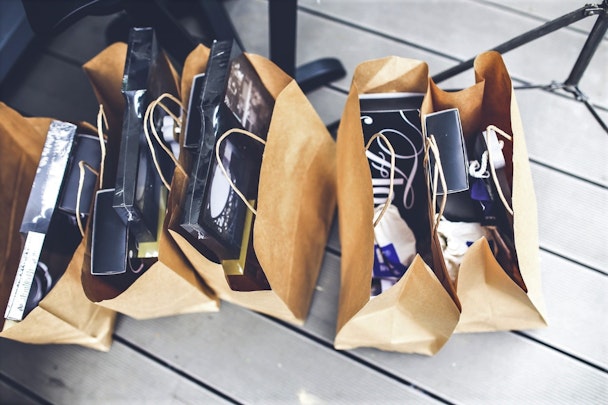Consumer trends 2018: is all shopping centred on an emotional need state?
20 years ago the Harvard Business Review published a paper that still resonates loudly with us today. Its title was 'Welcome to the Experience Economy'.

Does the modern-day shopper need to have an emotional connection with a brand?
Amusingly, they represented the entire history of economic progress through the evolution of a birthday cake, starting with mothers making cakes from their own farm’s ingredients, through to the local soft play area, ending with hosting the entire party and throwing in a cake for free.
While we are not economists, the salient point is that experience was and continues to be, everything. This applies even more so to the modern-day shopper. Their need for sensorial, physical and emotional interactions with the brand they buy and the store they shop at is growing exponentially.
Is it possible, we asked ourselves, to encapsulate all our observed consumer trends under just one area: emotional connection? We believe so, and it’s not a big leap to state that all shopping is centred on an emotional need state.
So let's start with the customer journey...
The often discussed customer journey must, in our minds, touch on at least one of these interactions in order to create a meaningful interaction with the product, brand or retailer. From the humble bathroom cleaner to a luxury handbag, thoughts leading to purchase include: will these reduce my time pressure, increase my status, or simply make life a little better? Make and reinforce this connection and increased sales will follow.
Omnichannel shoppers
Speaking of the customer journey, shoppers are truly channel agnostic – omnichannel. Now a phrase so widely used we don't need to define it here again, however the importance of understanding and planning for this cannot be overstated. Wooing consumers into physical stores in the first place and giving them compelling reasons to shop is getting harder and harder.
Remember that omnichannel is not a retail strategy nor a theory; it is an actual behaviour that your shoppers engage in (of course in a subconscious way). Web, mobile, social, apps – it’s all just shopping to consumers. The separation between retail channels is growing even more blurred by the day. Consumers expect a seamless experience across these channels. E-commerce began looking at a frictionless experience years ago, and thus partly due to online retailers doing this so well, friction at any stage in the journey will reduce conversion. Are you ensuring that shoppers can return online products in-store? Can they check if you have their size and colour on their mobile phone before they leave their homes?
Millennials
Today's digital natives – the Millennials – are a growing market to be nurtured. As they enter the workforce they have a distinctly different set of behaviours and experiences from older generations. They want to be able to make purchases, use social media, chat with friends (virtually, of course), research online and pay for products instantly and on the go. The convenience of the mobile device is paramount to this group.
And that leads us to mobile technology...
As we discussed in our article on the rise of 5G, the rise of mobile usage is dramatically affecting shopper behaviour. A shopper’s entire journey can begin and end on their phone. With Amazon’s one click checkout, a shopper can be in your store, touch and feel the product, then order it online and have it delivered to their home before finishing their latte.
So how can you help combat this showrooming? There are many in-store technologies that can be used to provide a personalised shopping experience. NFC (Near Field Communication) chips, QR codes, iBeacons and Visual Light Communications are just some of the emerging technologies that we commonly use. These, when linked to previous shopping histories via a loyalty app for instance, can provide disruptive yet compelling interactions with the shopper as they enter the store.
Shopper analytics
Shopper analytics (big data) is a hugely significant area that brands and retailers should take advantage of. Looking at shoppers' preferences, demographics, locations and social activity for instance will allow serving relevant, timely and personal messages. By combining these three variables the shopper is far more likely to engage and continue to have a relationship with the brand.
Over and above serving real time targeted ads, this big data enables our favourite new addition to the retail lexicon – clienteling. While shoppers are excited by chatbots, we believe shoppers will always respond more positively to a personal human interaction. Equipping your sales teams with technology – such as an iPad – which can look at inventory levels and ship direct to the shopper if they are out of stock, creates a fantastic experience for the consumer.
Virtual assistance
Finally, the rise of virtual assistance (a favourite of ours) is potentially the biggest game changer. How will you plan for the instant largely brand neutral shopping that can be done via Google Home or Amazon echo?
Again we return to experience: an emotionally driven state of mind. All of these trends, ideas and behaviours refer to the shopper. We are all shoppers so it's a simple question to ask – how would you want to experience your brand or store?
Mark Sibborn is managing director at Lick Creative, part of the Delta Group.
Content by The Drum Network member:

Lick Creative
Lick Creative is a multiple award-winning shopper marketing agency. We provide the full spectrum of in store marketing solutions designed to help retailers and brands...
Find out more
